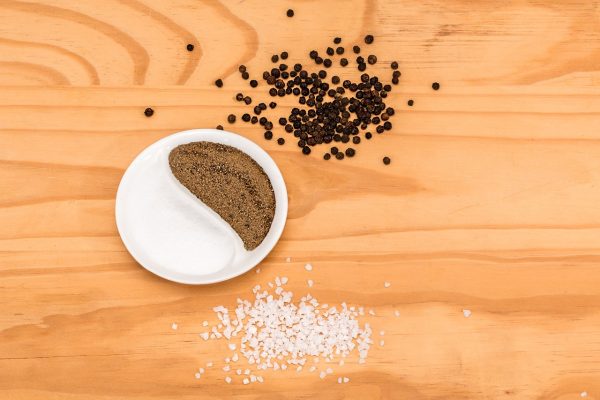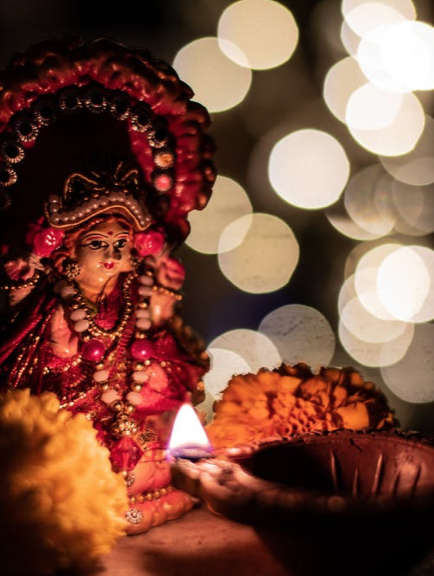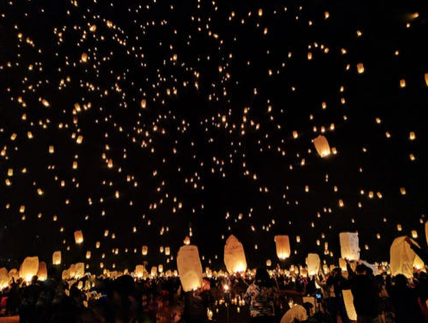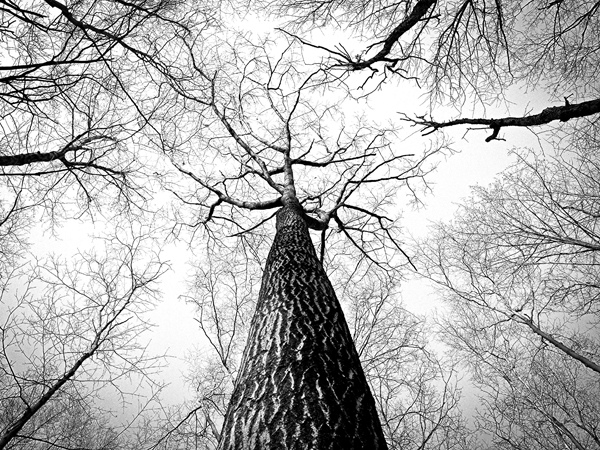
The ancient Chinese philosophy of yin and yang may sound obscure and difficult to understand for many of us living in the West. Yet when we understand a few basics about the yin and yang nature of foods we can achieve balance, which will help us with weight loss and cutting cravings.
“Yin and yang” is an ancient Chinese theory based on the perspective of continuous change and balance. For thousands of years, this theory has been integral to Chinese culture dating back to 700 B.C.E. The theory is that all things in the universe have an opposing force, and though they are opposing, they are very interconnected.
Everything contains yin and yang; they cannot exist without the other because they are never separate. For example: above and below; left and right; fire and water; energy and matter; and day and night form a yin and yang pair; day is yang and yin is night. Day looks different from night, yet it is impossible to have one without the other. Both create a totality, a complete whole.
According to this philosophy, good health is a state where opposing energies of yin and yang are balanced in the body. Each food has its own yin and yang force and can be said to be an energy in itself that influences the mind toward more expansive or contractive tendencies. Eating too much of either yin or yang foods can upset the body balance or help with the body balance. A person that is quick to anger has too much yang energy and can balance this disposition with yin foods such as green tea. The nature of yin is relaxing and cooling.
Sometimes when eating very yin food, we may crave some yang foods to balance. Wine, which is yin, balances cheese, which is yang. Beer, which is yin, balances salty pretzels, which are yang. Alcohol, which is yin, balances meat, which is yang. If a diet is too far to one side, it may stimulate cravings of foods from the other extreme in an attempt to achieve some balance. If one extreme yang food is eliminated from the diet, oftentimes it is best to eliminate an extreme yin food to maintain balance. So, if we give up beer, we may maintain the balance better if we also give up pretzels.
We already know how to make this yin and yang balance by eating certain foods instinctively. When the weather is cold, we naturally crave some nice and warm comfort food such as soup or stew. While on a hot and humid day, a chilled drink or cold salad would be our natural choice.
Sugar, alcohol, and caffeine are on the extreme yin end of the spectrum, which has a strong effect on our bodies. Salt, eggs, cheese, and meat are on the opposite end, categorized as extreme yang foods. When eating these extreme foods, our body naturally tries to make a balance by eating the opposite foods, which are also called cravings.
The best strategy is to eat a balanced daily diet, namely whole grains and vegetables that are grown locally and are in season, and other plant-based whole foods, as much as possible, instead of seesawing between strong or extreme yin or yang foods such as meat and sugar.
This philosophy is not just about nutrients and counting calories. And this unique approach, practiced for many centuries in East Asia, has helped many thousands of people improve their health, and even recover from difficult health conditions. So I encourage you to use this yin and yang perspective in your daily food choice to achieve your health and equilibrium.
When our yin and yang energies are balanced, we feel good not just physically, but mentally, emotionally, and even spiritually.
Common yin foods include:
- soy products, such as tofu and soybean sprouts
- certain meats, such as crab and duck
- fruit, such as watermelon and star fruit
- vegetables, such as watercress, cucumbers, carrots, and cabbage
- cold drinks and water
Common yang foods include:
- foods that are high in fat, protein, calories, and sodium
- certain meats, such as chicken, pork, and beef
- warm spices, such as cinnamon, nutmeg, and ginger
- eggs, glutinous rice, sesame oil, bamboo, and mushrooms
Have any Feng Shui questions? Feel free to contact me at michelle@michellecromer.com and sign up for your Power Color or visit me on Facebook at Michelle Cromer Feng Shui.
 In an interview, with reference to his fame, Bob Marley was once asked, “Are you a rich man, do you have a lot of possessions?” He replied, “I don’t have that kind of richness, my richness is life.”
In an interview, with reference to his fame, Bob Marley was once asked, “Are you a rich man, do you have a lot of possessions?” He replied, “I don’t have that kind of richness, my richness is life.” There is only now: Practice mindfulness; strive to return to the present moment. Take walks and leave your phone behind. Play with your children. Wrestle with your dogs. Look up at the sky, savor a cup of coffee or relish a glass of wine. Be here now as often as possible.
There is only now: Practice mindfulness; strive to return to the present moment. Take walks and leave your phone behind. Play with your children. Wrestle with your dogs. Look up at the sky, savor a cup of coffee or relish a glass of wine. Be here now as often as possible. Years ago, I was invited to join a wonderful women’s circle that was all about celebrating the divine feminine. We were asked to bring something to the circle to share with the other women. Some brought crystals, there were some tribal beads, and one woman brought drums and danced a ceremonial Native American rave. I brought chocolate and martinis.
Years ago, I was invited to join a wonderful women’s circle that was all about celebrating the divine feminine. We were asked to bring something to the circle to share with the other women. Some brought crystals, there were some tribal beads, and one woman brought drums and danced a ceremonial Native American rave. I brought chocolate and martinis.
 Recently, a family who had just lost their son called me. After a long battle with leukemia, he died in his bedroom, he was just 11. They wanted me to stand in that difficult sacred space between the living and the dead, between faith and fear, and determine the best way to honor his spirit. As I walked in I heard a woman, who I suppose was a friend tell the grieving family not to think of the little boy’s body, because it was “just a shell.” I am sure this thought was well-intentioned but was said by a person who is unsettled by the fresh grief of others. Right between the inhale and the exhale of the bone-wracking sobs such hurts produce, to some it’s normal to have this “just a shell idea.”
Recently, a family who had just lost their son called me. After a long battle with leukemia, he died in his bedroom, he was just 11. They wanted me to stand in that difficult sacred space between the living and the dead, between faith and fear, and determine the best way to honor his spirit. As I walked in I heard a woman, who I suppose was a friend tell the grieving family not to think of the little boy’s body, because it was “just a shell.” I am sure this thought was well-intentioned but was said by a person who is unsettled by the fresh grief of others. Right between the inhale and the exhale of the bone-wracking sobs such hurts produce, to some it’s normal to have this “just a shell idea.” Several months after the celebration of the life of this little boy I returned and made these suggestions:
Several months after the celebration of the life of this little boy I returned and made these suggestions:
